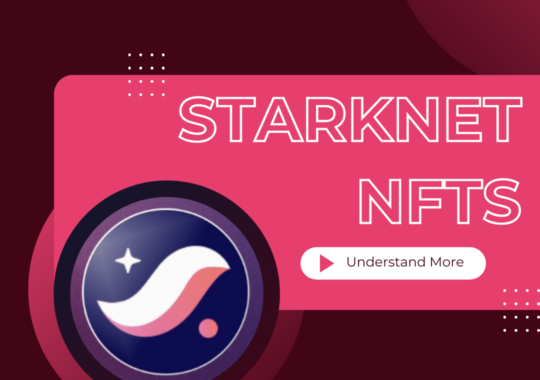In the dynamic landscape of blockchain technology, the concept of parallelization has emerged as a pivotal advancement, reshaping the transaction processing paradigm within blockchain networks. This article delves into the nuances of parallelization, its significance in the cryptocurrency domain, and its profound implications for the evolution of blockchain technology.

Understanding Parallelization
Within the context of cryptocurrency and blockchain technology, parallelization denotes the ability of a blockchain network to execute multiple transactions concurrently, departing from the traditional sequential transaction processing approach. Unlike the sequential execution model, parallelization enables simultaneous transaction processing, thereby significantly enhancing the efficiency and scalability of blockchain networks.
The Importance of Parallelization
Blockchain technology has encountered persistent challenges related to scalability and efficiency. Conventional transaction processing methods, characterized by sequential execution, often lead to network congestion, sluggish transaction speeds, and heightened transaction costs. Parallelization addresses these issues by facilitating the concurrent processing of a larger volume of transactions, consequently accelerating transaction processing speeds and reducing costs.
The Role of Parallelization in Blockchain Scaling
Parallelization stands as a cornerstone in the realm of blockchain scaling, facilitating networks to efficiently manage and process a higher volume of transactions. Here’s a comprehensive exploration of how parallelization fosters scalability within blockchain ecosystems:
1. Concurrent Transaction Processing:
Traditionally, blockchain networks follow a sequential approach to transaction processing, leading to bottlenecks and delayed confirmation times. Parallelization revolutionizes this process by enabling simultaneous validation of multiple transactions. This concurrent processing significantly enhances throughput, allowing the network to handle a larger volume of transactions without compromising security.
2. Improved Throughput:
The adoption of parallelization results in a notable increase in the overall throughput of the blockchain network. With transactions executed in parallel, the network can process more transactions within the same timeframe, effectively boosting scalability. This enhanced throughput is fundamental for accommodating the growing demands of users and applications within the blockchain ecosystem.
3. Reduced Latency:
Parallelization contributes to a reduction in transaction confirmation times, leading to decreased latency within the network. Faster confirmation times not only enhance user experience but also make the network more responsive and agile. This improvement in latency is crucial for applications requiring real-time transaction processing and responsiveness.
4. Resource Utilization:
Parallel execution optimizes resource utilization within blockchain networks. By enabling nodes to concurrently process different transactions, parallelization maximizes the utilization of available computational resources. This efficient allocation of resources enhances the overall performance and efficiency of the network, further augmenting scalability.
5. Sharding and Partitioning:
Sharding represents a sophisticated form of parallelization, wherein the blockchain is partitioned into smaller, manageable segments known as shards. Each shard independently processes its designated subset of transactions, leveraging parallel execution to distribute the workload across multiple shards. Sharding significantly enhances scalability by allowing the network to handle a larger number of transactions in parallel.
Mechanisms of Parallelization
Parallelization involves categorizing transactions into distinct groups based on their dependencies and executing them concurrently. This strategy optimizes available network resources and guides the network through multiple states to achieve consensus on a unified state among network nodes. By parallelizing transaction execution, blockchain networks can achieve higher throughput and enhanced efficiency.
Impact of Parallelization
The adoption of parallelization brings about significant improvements in the efficiency and scalability of blockchain networks. This capability empowers networks to accommodate increased transaction volumes, rendering them more conducive to widespread adoption. Additionally, reduced transaction costs contribute to the accessibility and affordability of blockchain technology, democratizing access to financial services and decentralized applications.
Challenges and Risk Mitigation
While parallelization offers numerous benefits, it also introduces challenges and risks that must be effectively managed. Ensuring consistency and atomicity in parallel transactions, mitigating race conditions, and safeguarding smart contract security are among the primary challenges associated with parallelization. Furthermore, efficient resource allocation is essential to mitigate the risk of resource exhaustion and denial-of-service attacks.
Best Practices for Mitigation
To address the challenges posed by parallelization, blockchain networks can implement various best practices and mitigation strategies. These include deploying robust concurrency control mechanisms, conducting comprehensive testing and security audits, establishing clear transaction ordering rules, continuously monitoring the network for anomalies, and selecting consensus algorithms that effectively manage parallelization while upholding security standards.
The Future Outlook
As blockchain technology continues to evolve, parallelization is expected to play an increasingly integral role. By expediting transaction processing and enhancing scalability, parallelization has the potential to accelerate the adoption of blockchain technology and foster the emergence of innovative applications and use cases. However, maintaining a balance between speed and security remains critical for the sustained advancement of blockchain technology.
Conclusion
Parallelization signifies a significant advancement in blockchain technology, addressing fundamental challenges encountered by traditional networks and facilitating the development of more efficient and scalable systems. As the global adoption of blockchain and cryptocurrency gains momentum, parallelization stands poised to shape the future of finance and technology. By optimizing efficiency and bolstering security, parallelization unlocks new possibilities and catalyzes transformative changes across industries worldwide.
Read more:
A Closer Look at Dymension in 2024
Why Should DeFi Users Consider the Cetus Protocol?
Making Prudent Investments in Gold and Other Metals
Princy Agarwal, a postgraduate in English from Delhi University, writes content for Tricky Finance, where they simplify complex financial topics for readers. With a knack for clear communication, Princy’s work helps make finance understandable and accessible to all.




